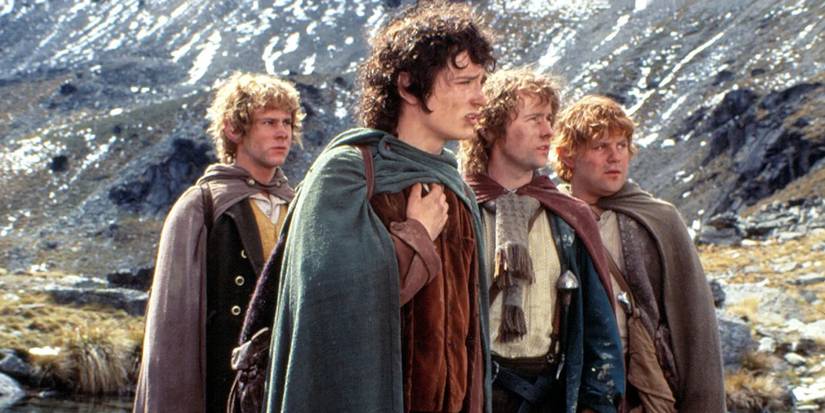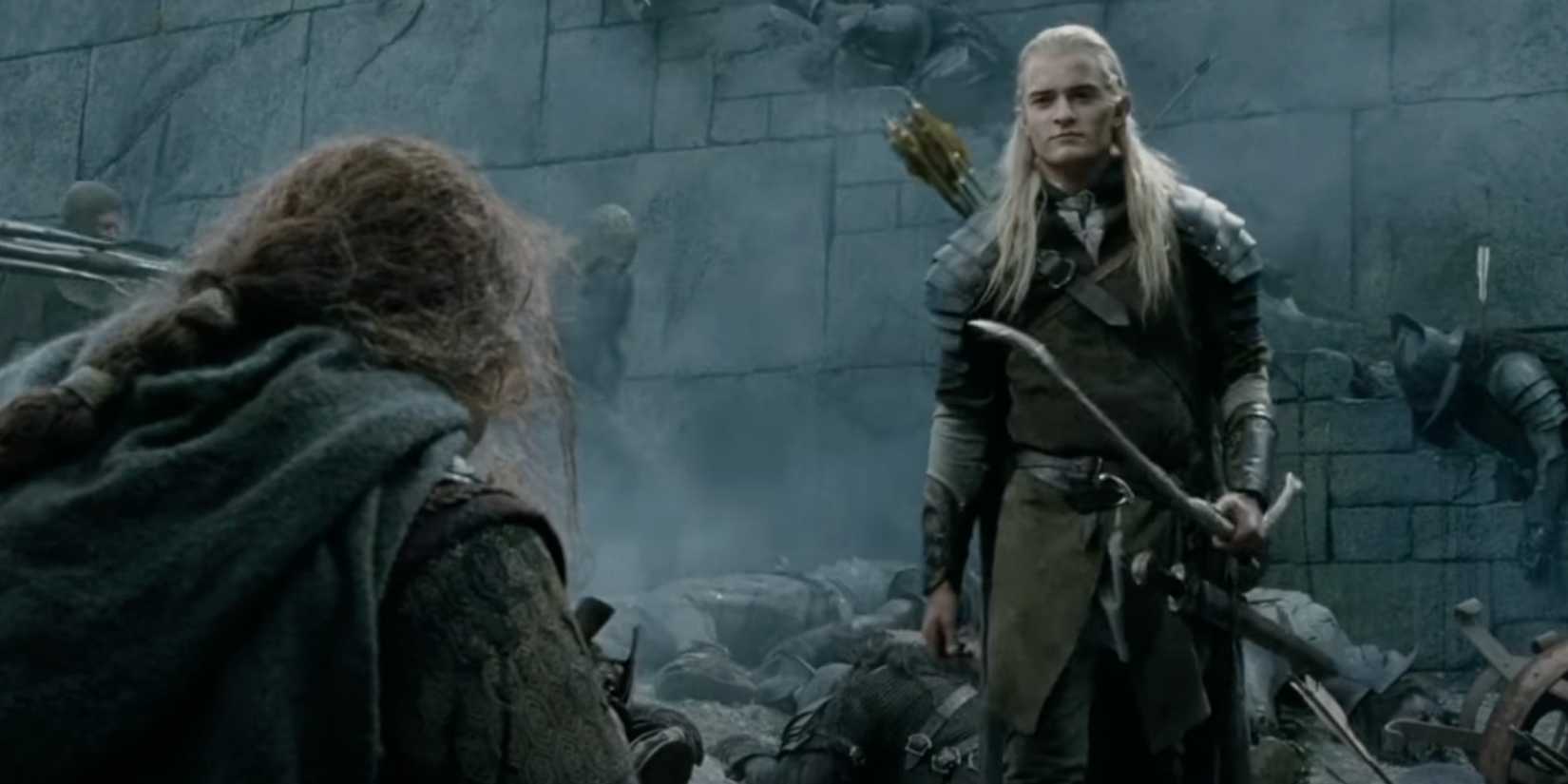
After watching The Lord of the Rings, you might wonder if Frodo truly needed the Fellowship. While the group was created by the Council of Elrond to help him reach Mordor and destroy the One Ring, they’d already gone their separate ways by the end of the first book.
Someone reading the story might wonder if each member of the Fellowship truly helped Frodo succeed in his mission. Legolas, Gimli, and Boromir, in particular, don’t seem to have played essential roles.
If Frodo gets through the most dangerous parts of his journey with only Sam and Gollum, does he even need a whole Fellowship? Could Frodo and Sam reach the river Anduin with just Gandalf and Aragorn helping them? Considering the Fellowship members eventually split up to assist Frodo in different ways, would it have been better for Elrond to send them on separate missions from the start? And, could any skilled elf archer have filled Legolas’s role?
The Fellowship wasn’t actually formed to destroy Sauron. Its real goal in The Lord of the Rings was something else entirely, and if they hadn’t succeeded in this hidden task, Middle-earth would have faced a grim future.
The Real Purpose Of The Fellowship In The Lord Of The Rings

Elrond carefully chooses the members of Frodo’s company, making sure to include representatives from all the peoples of Middle-earth – humans, elves, dwarves, and hobbits. Everyone has a reason to defeat Sauron, and Elrond believes each group should help. He also knows these races haven’t always trusted each other, so by including all of them in the Fellowship, he hopes to prevent anyone from trying to take the Ring for their own benefit.
The variety within the Fellowship isn’t just useful—it represents their togetherness. It also suggests what they’re really meant to achieve.
The Fellowship’s purpose wasn’t just about protecting Frodo or defeating Sauron; it was fundamentally about bridging the ancient rifts and bringing unity to Middle-earth.
The elves and dwarves have been enemies for ages, going all the way back to ancient conflicts. Humans have tried to work with both groups, but are often seen as untrustworthy and tend to fight amongst themselves. Hobbits, for the most part, keep to themselves and are often overlooked. This disunity has been used against the free peoples by dark lords like Morgoth and Sauron, allowing them to gain power.
The Fellowship was never an expedition against Sauron, but a means of healing Middle-earth.
How The Fellowship Improves Relations Between Middle-earth’s Races

When The Lord of the Rings story starts, many elves are already leaving Middle-earth for Valinor. However, the relationship between elves and dwarves is improved beforehand thanks to Legolas and Gimli. These two begin as reluctant rivals but become very close friends while fighting in the War of the Ring. After the war, Legolas travels to the Glittering Caves to visit Gimli, who has founded a new dwarven home there. Eventually, Gimli becomes the first dwarf to ever reach Valinor.
Gimli and Galadriel also like each other, and their connection, along with the friendship between Legolas and Gimli, helps to heal the long-standing conflict between elves and dwarves.
Having both Aragorn and Boromir in the Fellowship lets the other races see the flaws and strengths of men directly. Gimli, as a respected leader of the dwarves, would share his admiration for Aragorn and Boromir with his people, creating a lasting legacy of respect. Meanwhile, the elves would depart reassured that Middle-earth is protected as humanity rises to prominence.
Boromir initially doesn’t trust the elves of Lothlórien, but their generous help changes his mind. He argues with Aragorn about the best way forward, but they put aside their differences and work together when Boromir is dying. Aragorn eventually reaches Gondor, carrying Boromir’s memory and having secured Rohan as an ally. This helps to bridge the gaps between the different groups of men and begin to unite them.
After the War of the Ring, everyone in Middle-earth realizes they shouldn’t underestimate hobbits. When Aragorn becomes King Elessar and begins rebuilding the kingdoms of Arnor and Gondor, he makes sure the Shire is left peaceful and independent – a gesture of both respect and acknowledgement of their unique way of life.
Was Middle-earth Diplomacy Always The Real Reason Behind The Fellowship?

Even if the Fellowship doesn’t fully succeed in getting Frodo to Mount Doom, the bonds they form will lay the groundwork for peace in the future. Without these connections, Aragorn’s reign might not bring lasting peace, as lingering evil could take advantage of a divided Middle-earth.
Elrond intended for the Fellowship to follow a different path, but greater powers were at work, subtly shaping events. The outcome of the War of the Ring wasn’t entirely left to chance; it was guided, at least in part, by the supreme being, Erū Ilúvatar, and the Valar. For instance, Erū directly caused Gollum to fall into the fires of Mount Doom, ensuring the Ring’s destruction.
Throughout The Lord of the Rings, it seems these powerful, god-like beings also influenced who ended up in the Fellowship. For example, Boromir only arrives at the Council of Elrond because he and his brother share a prophetic dream, and the story never reveals the source of that dream.
It’s very possible, and perhaps even probable, that Boromir’s dream was planted by a powerful, guiding force to bring him to Rivendell and make him part of the Fellowship’s journey. This suggests the Fellowship wasn’t about the Ring itself, but rather a plan orchestrated by a higher power – Eru – to establish a foundation for lasting peace between the races of Middle-earth during the Fourth Age of The Lord of the Rings. The Fellowship wasn’t just necessary; the specific nine members were predetermined.
Read More
- Super Animal Royale: All Mole Transportation Network Locations Guide
- Shiba Inu’s Rollercoaster: Will It Rise or Waddle to the Bottom?
- Zerowake GATES : BL RPG Tier List (November 2025)
- I Love LA Recap: Your Favorite Reference, Baby
- Pokemon Theme Park Has Strict Health Restrictions for Guest Entry
- Daisy Ridley to Lead Pierre Morel’s Action-Thriller ‘The Good Samaritan’
- Stranger Things: Tales From ’85 – Timeline Placement Explained
- Arc Raiders Eyes On The Prize Quest Guide
- Crypto’s Curious Disappearance? 🤔
- Dispatch art director says Malevola’s physique was inspired by influencer LeanBeefPatty
2025-10-31 00:49